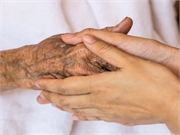More Americans Are Now Dying at Home
By Dennis ThompsonHealthDay Reporter

WEDNESDAY, Dec. 11, 2019 (HealthDay News) -- Most folks would prefer a peaceful death at home, in familiar surroundings with the company of their loved ones.
Now, for the first time in a century, there's a rise in the likelihood of those dying wishes to be honored.
Home has now surpassed the hospital as the most common place of death in the United States, for the first time since the early 20th century, according to a new report.
"For the first time in modern history, more people died in the United States at home than in any other single location," said senior researcher Dr. Haider Warraich, an end-of-life care expert and an instructor at Harvard Medical School.
About 31% of people died at home in 2017, compared with about 30% who died in a hospital, according to national data the researchers analyzed. Another 21% died in a nursing home and about 8% in a hospice facility.
Comparatively, in 2003 about 40% of people died in the hospital while only 24% died at home.
This shift actually reflects the desires of people facing the end of their lives, Warraich said.
"The vast majority of people, regardless of culture or economic status, prefer to die at home," he said. "But ever since the advent of the modern hospital and advances in modern medicine, the vast majority of people have actually died in the hospital.
"Overall, it represents a positive change because it is indicative that medical care might be becoming more patient-centered, because we're able to respect people's wishes of being able to die at home," Warraich said.
This trend reflects better recognition of palliative care, as more people take advantage of Medicare-covered hospice benefits to die where they are most comfortable, Warraich said.
"The vast majority of hospice care is delivered at home," he said. "That's really the only major support we provide our patients at the end of life that's covered by insurance."
Dying at home also is less expensive, noted Warraich and Katherine Ornstein, an assistant professor of geriatrics and palliative medicine with the Icahn School of Medicine at Mount Sinai in New York City.
"There's a lot of move toward home-based services increasingly, and that's not just at the end of life," said Ornstein, who wasn't involved with the study. "Care for people with serious illness is shifting to the community and the home."
There are drawbacks to this trend in end-of-life care, however.
Warraich and other experts are concerned that family and friends now shoulder much of the heavy burden that comes with caring for a dying loved one.
"I'm cautious because we have to really remember if care is shifting to the home, then we are increasingly relying on family members to support patients," said Ornstein.
"They're not paid and they're providing the support, and we know that end-of-life care is difficult," she continued. "We have to do more to help caregivers. There have to be more resources available. There has to be more respite care. We have to think about family medical leave."
Warraich and Ornstein also said that some illnesses absolutely need continued hospitalization, and they are concerned that some people will be taken home to die when a hospital or nursing facility would be able to give them better care.
"For them, home might not be the right place because you just don't have enough resources to support them," Warraich said.
Continuing disparities also mean that some people remain less likely to be allowed to die at home, the researchers found.
For example, blacks are 47% and Hispanics about 40% more likely to die in a hospital than whites, the data shows.
People with cancer also are more likely to be able to die at home than people with other fatal illnesses.
Even though heart disease is America's top killer, heart patients are 27% less likely to die at home than cancer patients, researchers found.
The findings were published Dec. 12 in the New England Journal of Medicine.
"Really, the entire end-of-life care movement, including hospice, originated because we wanted to help patients with cancer," Warraich said. "But the vast majority of people now don't die of cancer."
"The question is, why are fewer patients with other diseases dying at home? Is the current end-of-life care system as appropriate for them as it is for patients with cancer?" Warraich continued.
Ornstein agreed. "More work has to be done so everybody can get to have high-quality end-of-life care," she concluded.
More information
The U.S. National Institute on Aging has more about end-of-life care.

The news stories provided in Health News and our Health-E News Newsletter are a service of the nationally syndicated HealthDay® news and information company. Stories refer to national trends and breaking health news, and are not necessarily indicative of or always supported by our facility and providers. This information is provided for informational and educational purposes only, and is not intended to be a substitute for medical advice, diagnosis, or treatment.

